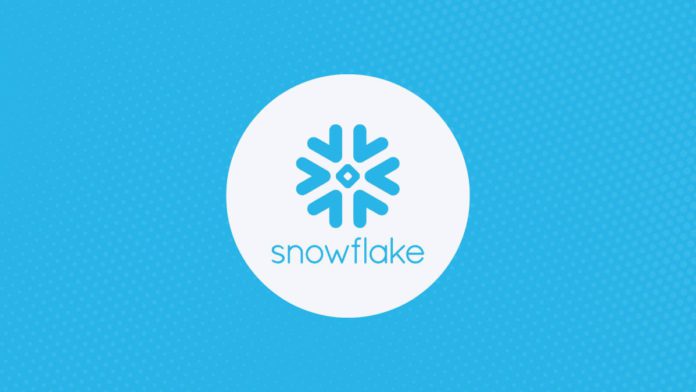With the increasing amount of data generated, using data warehouses has become essential to manage and analyze this information effectively. Among the various data solutions available, Snowflake data warehouse holds a 20.75% market share and is one of the most widely used platforms. It is highly versatile and can accommodate your data needs, whether you are a beginner or an experienced professional.
This article will provide an overview of Snowflake data warehouse and explore its key features, use cases, advantages, and disadvantages. By the end, you will have enough context to decide if this tool suits your specific project.
What Is Snowflake Data Warehouse?
Snowflake is a data warehousing platform that offers secure and flexible data storage solutions. It operates on cloud infrastructure and allows you to scale your resources on demand, reducing overall expenses. You can store data of various formats and access advanced data analytics features without specialized hardware.
The platform is ideal for several data management processes, such as data integration, real-time analytics, data sharing, and enabling machine learning workflows. Its ability to process complex queries and provide quick insights helps you leverage large datasets for reporting, decision-making, and predictive analytics.
Key Features of Snowflake Data Warehouse
Snowflake data warehouse offers a comprehensive set of functionalities that sets it apart from its competitors. Below are some key features that you can explore:
- Hybrid Architecture: Snowflake utilizes a combination of shared-disk and shared-nothing architectures. The former offers high throughput capacity and allows you to process large datasets efficiently. The latter aids you in scaling horizontally to manage concurrent tasks.
- Massively Parallel Processing (MPP): The platform employs MPP compute clusters and enables the distribution and processing of your data across several nodes. This improves data management and results in faster query execution and data retrieval.
- Micro-Partitioning: You can use this feature to automatically divide massive tables into small, columnar storage units called micro-partitions. It lets you prune your data at a granular level.
- Concurrency Management: Snowflake allows you to handle concurrent workloads effectively by separating computing and storage resources. As a result, multiple users can simultaneously access the same data without any drop in efficacy.
- Robust Security: Snowflake offers advanced security features, including end-to-end encryption, role-based access control (RBAC), and multi-factor authentication (MFA). The tool ensures that your data maintains its integrity and complies with industry standards such as HIPAA, PCI DSS, and SOC 1 and SOC 2.
Use Cases of Snowflake Data Warehouse
Many organizations depend on Snowflake data warehouse for a broad range of applications. By exploring the use cases below, you will understand why Snowflake is used extensively for data management, analytics, and more.
Heterogenous Data Handling
Snowflake data warehouse is capable of managing semi-structured, structured, and unstructured data, making it suitable for data lake implementations. It supports many data formats, including JSON, Avro, ORC, XML, and Parquet, enabling you to ingest and process diverse types of data.
Data Warehousing and Analytics
With Snowflake, you can centralize large volumes of data from various sources, such as marketing campaigns, customer interactions, and sales, into a single platform. It allows you to conduct in-depth, real-time data analytics. Additionally, you can use Snowflake to perform predictive maintenance, fraud detection, anomaly identification, and customer behavior analysis.
Business Intelligence
You can integrate Snowflake with popular business intelligence tools like QuickSight, Power BI, Looker, and Tableau to build dynamic dashboards and reports. It helps you perform ad hoc analysis by running SQL queries and quickly visualize valuable insights, trends, and patterns in your data. This simplifies the decision-making process, provides credibility to your conclusions, and gives you an advantage during stakeholder buy-in.
Machine Learning and Model Deployment
The Snowflake platform allows you to build, train, and deploy machine learning (ML) models. It supports programming languages like Python, R, Java, and C++, enabling you to develop advanced ML solutions. Additionally, you can integrate Snowflake with popular ML libraries like TensorFlow and PyTorch, as well as Apache Spark, to simplify data preparation for ML models.
Pros and Cons of Using Snowflake Data Warehouse
Like any other technology or tool, Snowflake data warehouse also has benefits and drawbacks. Some of them are listed below:
Advantages of Snowflake Data Warehouse
- Supports ETL and ELT Processes: You can integrate Snowflake with popular ETL tools like Informatica, Talend, Fivetran, and Matillion. The warehouse supports batch data insertion and offers pre-built connections with Apache Airflow for orchestrating ETL/ELT data pipelines.
- Streaming Data Transfer: While Snowflake was initially designed for batch processing, its Snowpipe service enables you to ingest data continuously in micro-batches. This helps you load streaming data in real-time or near real-time.
- Data Caching: Snowflake’s virtual warehouse memory is used for caching. When executing a query, data from various tables gets cached by distinct compute clusters. You can leverage this cached data to obtain faster results for subsequent queries.
- Data Recovery Options: Snowflake offers Time Travel and Fail-Safe features to prevent data loss. The former lets you restore databases, schemas, or tables from a specific point in the past. The latter provides an additional seven-day recovery period after Time Travel ends, ensuring reliable data retrieval.
- Near-Zero Management: Snowflake provides an almost serverless experience by automatically managing all maintenance, updates, and software installation tasks. This significantly reduces administrative overhead and allows you to focus on performing data analysis.
- Multi-Cloud Support: Snowflake can run on multiple cloud platforms, including AWS, Azure, and Google Cloud. You can choose or switch between cloud providers, increasing flexibility and reducing vendor lock-in.
- Multiple Access Options: There are several flexible ways to access Snowflake data, including Snowsight (a web-based UI for data management) and SnowSQL (a command-line interface for executing queries). It also offers connectors and drivers (ODBC, JDBC, Python) for integrating with different programming environments.
- Easier Learning Curve: Snowflake is an SQL-based platform, making it easier to use if you have previous experience with SQL. Its intuitive user interface caters to both technical and non-technical users, simplifying data warehouse setup and usage.
Disadvantages of Snowflake Data Warehouse
- Does Not Support On-Prem Systems: The platform is entirely cloud-based and does not support on-premises deployment. If you need a hybrid solution or have strict compliance requirements for on-premises data, you cannot depend on Snowflake.
- Limited Community Support: With a relatively smaller community, it can be difficult to find peer-to-peer support, resources, and readily available solutions for troubleshooting or advanced use cases. You might have to rely on official documentation, which can slow down the problem-solving process.
- Complex Pricing Structure: Snowflake uses a pay-as-you-go pricing model. While paying on demand is useful, predicting costs is also challenging. Separate data storage and computation charges, combined with fluctuating workloads, can result in unexpected and potentially high expenses.
Wrapping It Up
Snowflake data warehouse is a powerful, scalable solution that helps you accommodate your growing data volumes and changing business requirements. Its flexibility, cloud-native architecture, and ease of use make it suitable for several use cases, including real-time analytics and data operations in ML environments.
However, like any other tool, Snowflake has some drawbacks, such as complicated pricing models and a smaller user community. If your organization can overcome these shortcomings, utilizing this platform can enable you to optimize data management and improve the performance of your workflows. It can also significantly reduce operational overhead and increase your organization’s profitability in the long run.
FAQs
How is Snowflake data warehouse different from conventional SQL data warehouses?
Snowflake differs from conventional SQL data warehouses by offering a cloud-native architecture and separate compute and storage layers for improved scalability. Besides this, it supports different semi-structured data formats, including JSON, XML, and Parquet, enhancing data flexibility.
Is Snowflake a PaaS or SaaS?
Snowflake is a SaaS solution built for and hosted on cloud platforms like Google Cloud, AWS, and Azure. It requires minimal management and operational burden, providing the flexibility of being shared as distributed software.
How many types of tables does Snowflake have?
The most commonly used types of tables are temporary, transient, and permanent tables. Snowflake also offers other options, including external, dynamic, hybrid, iceberg, and event tables.


